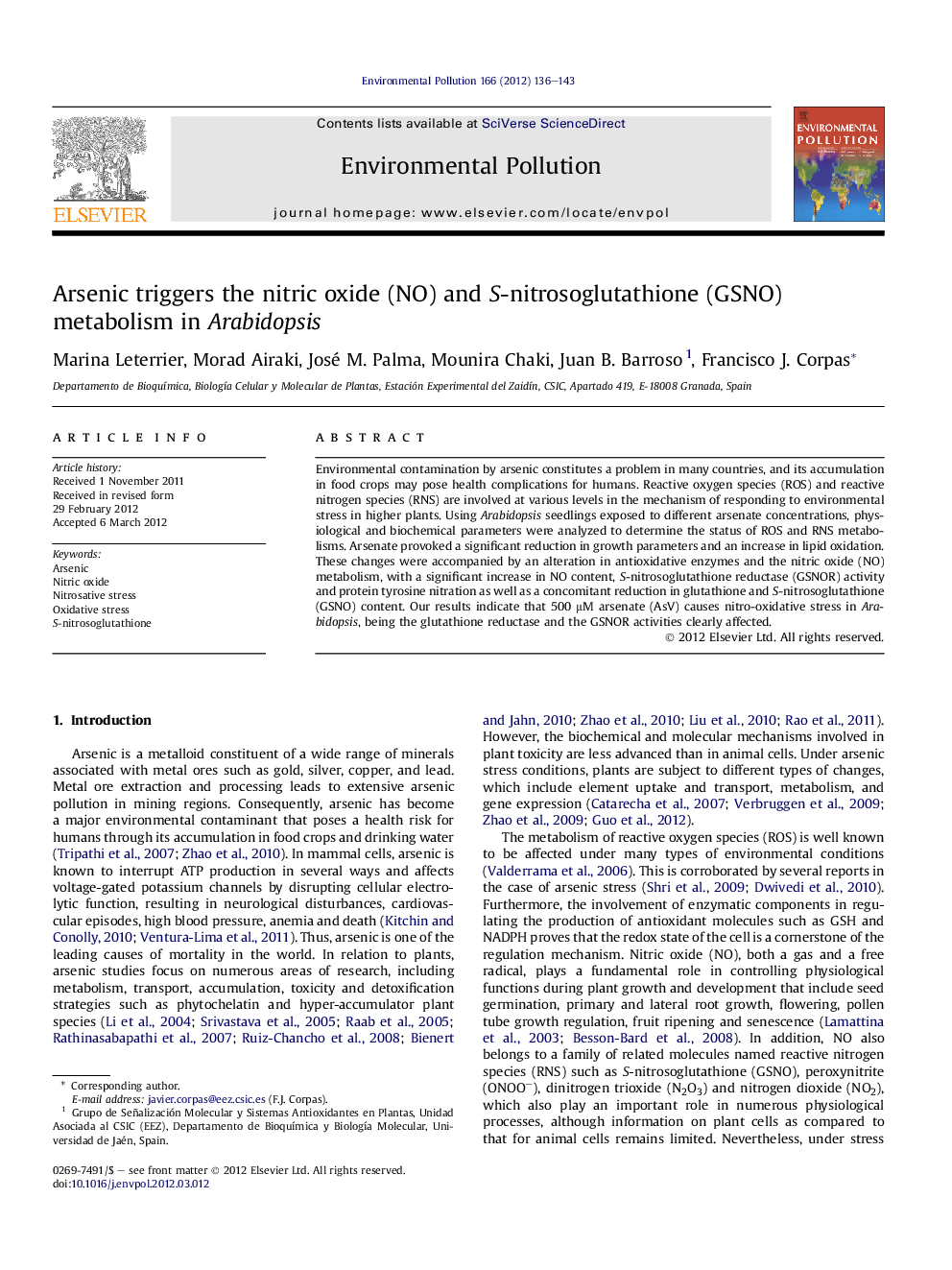| Article ID | Journal | Published Year | Pages | File Type |
|---|---|---|---|---|
| 4425028 | Environmental Pollution | 2012 | 8 Pages |
Environmental contamination by arsenic constitutes a problem in many countries, and its accumulation in food crops may pose health complications for humans. Reactive oxygen species (ROS) and reactive nitrogen species (RNS) are involved at various levels in the mechanism of responding to environmental stress in higher plants. Using Arabidopsis seedlings exposed to different arsenate concentrations, physiological and biochemical parameters were analyzed to determine the status of ROS and RNS metabolisms. Arsenate provoked a significant reduction in growth parameters and an increase in lipid oxidation. These changes were accompanied by an alteration in antioxidative enzymes and the nitric oxide (NO) metabolism, with a significant increase in NO content, S-nitrosoglutathione reductase (GSNOR) activity and protein tyrosine nitration as well as a concomitant reduction in glutathione and S-nitrosoglutathione (GSNO) content. Our results indicate that 500 μM arsenate (AsV) causes nitro-oxidative stress in Arabidopsis, being the glutathione reductase and the GSNOR activities clearly affected.
► In Arabidopsis, arsenate provokes damages in the membrane integrity of root cells. ► As induces an oxidative stress according to an increase in lipid oxidation. ► NO content and protein tyrosine nitration increases under arsenate stress. ► Arsenate provokes a reduction of GSH, GSSG and GSNO content. ► Arsenate induces a nitro-oxidative stress in Arabidopsis.
